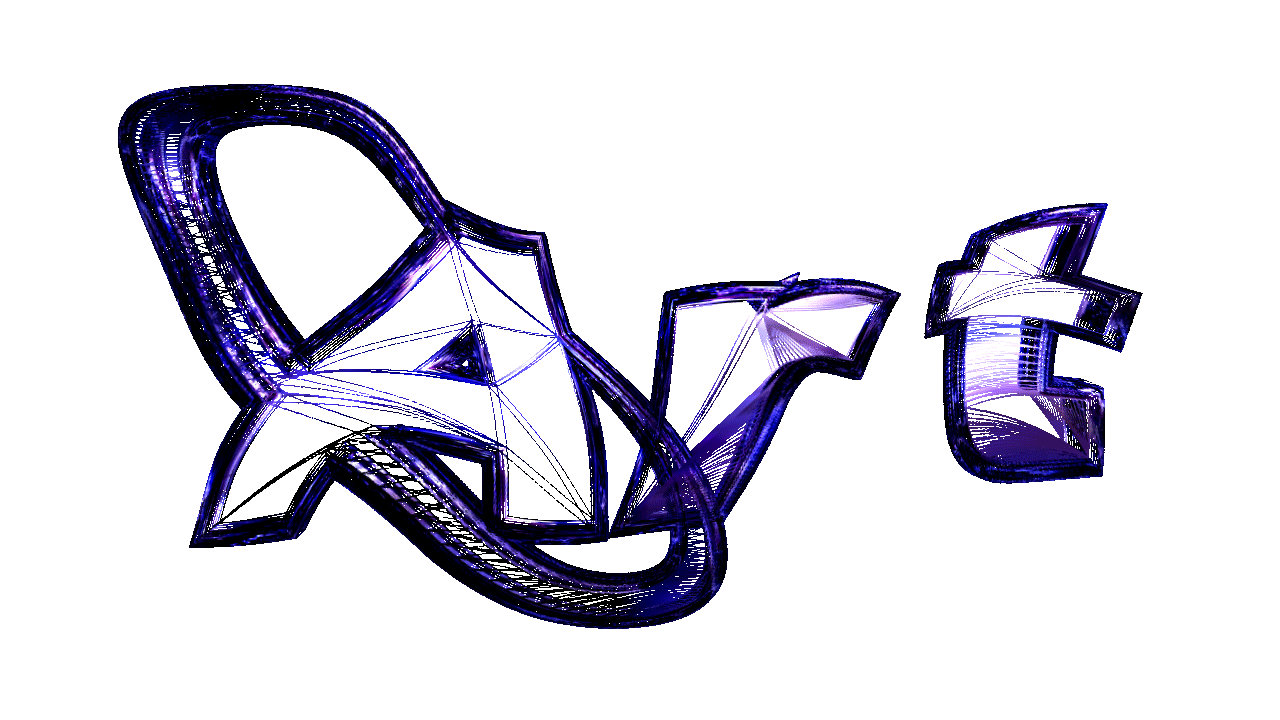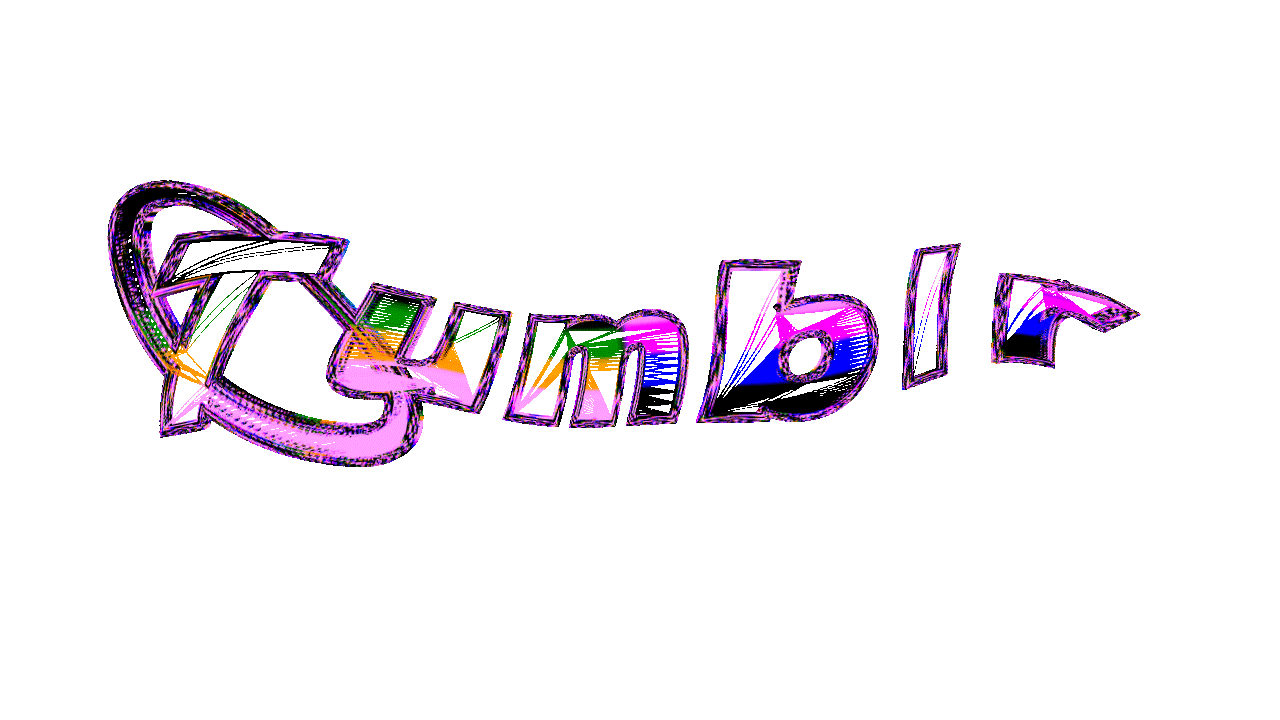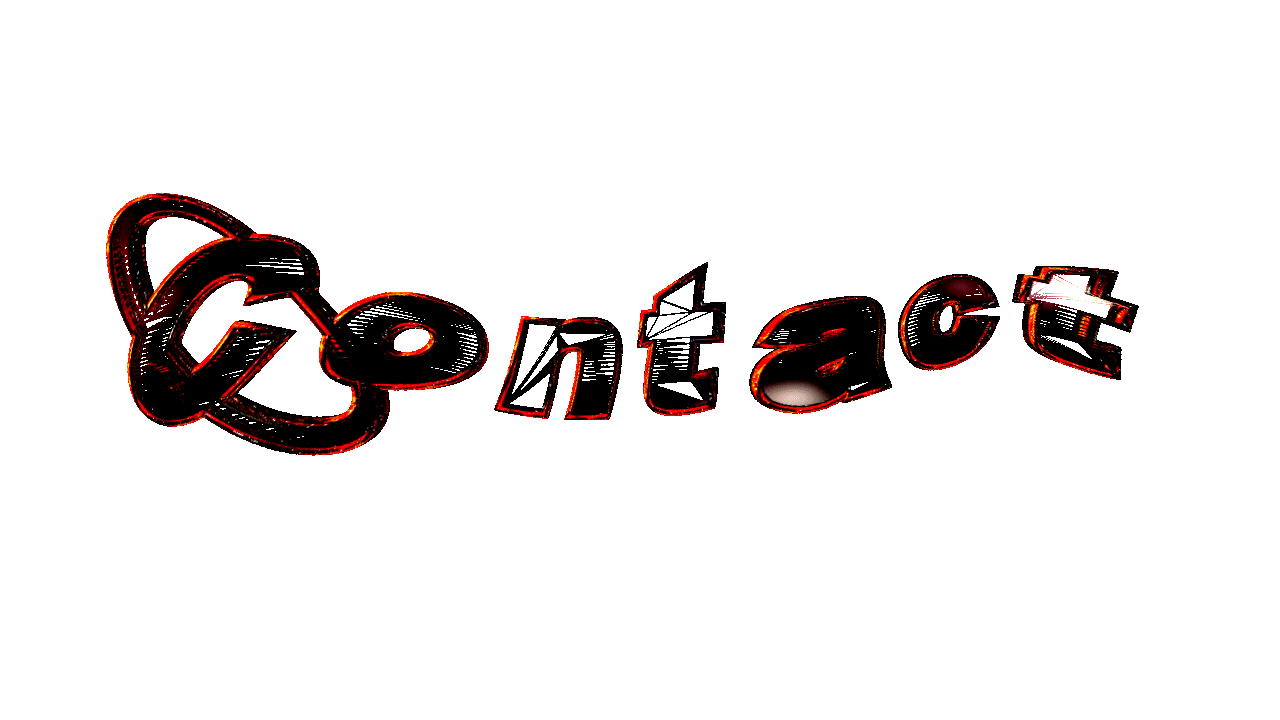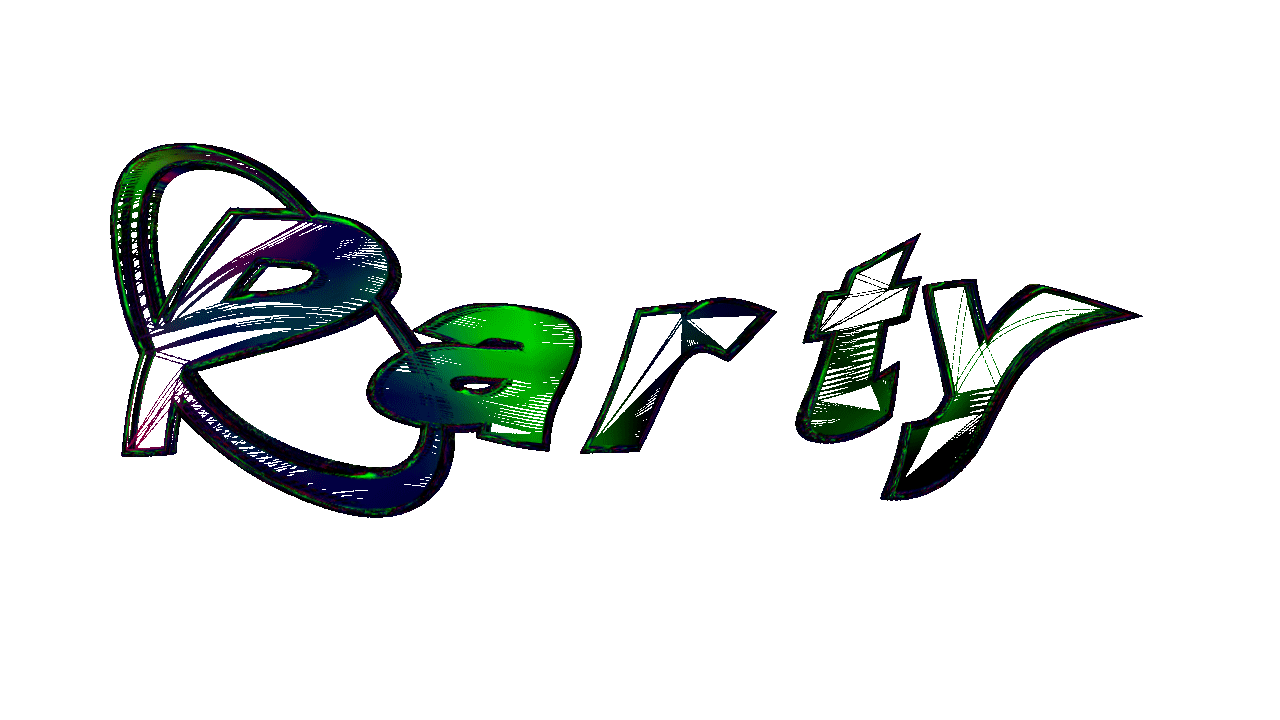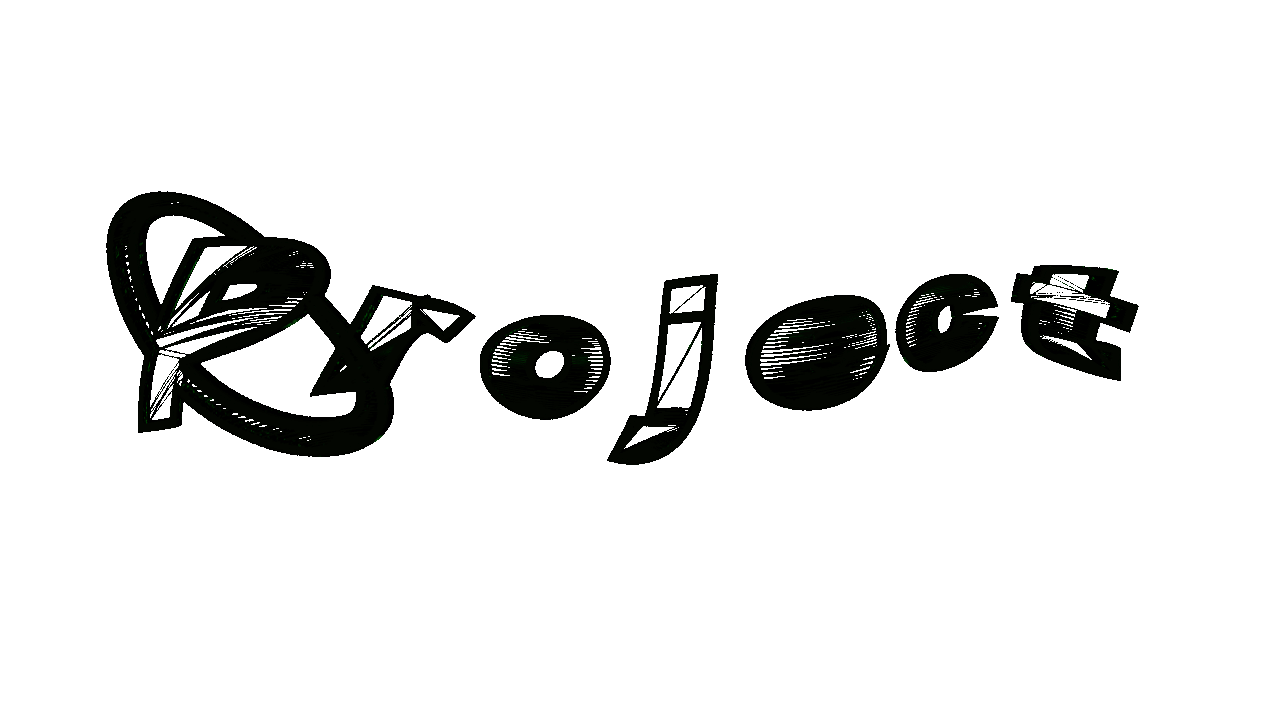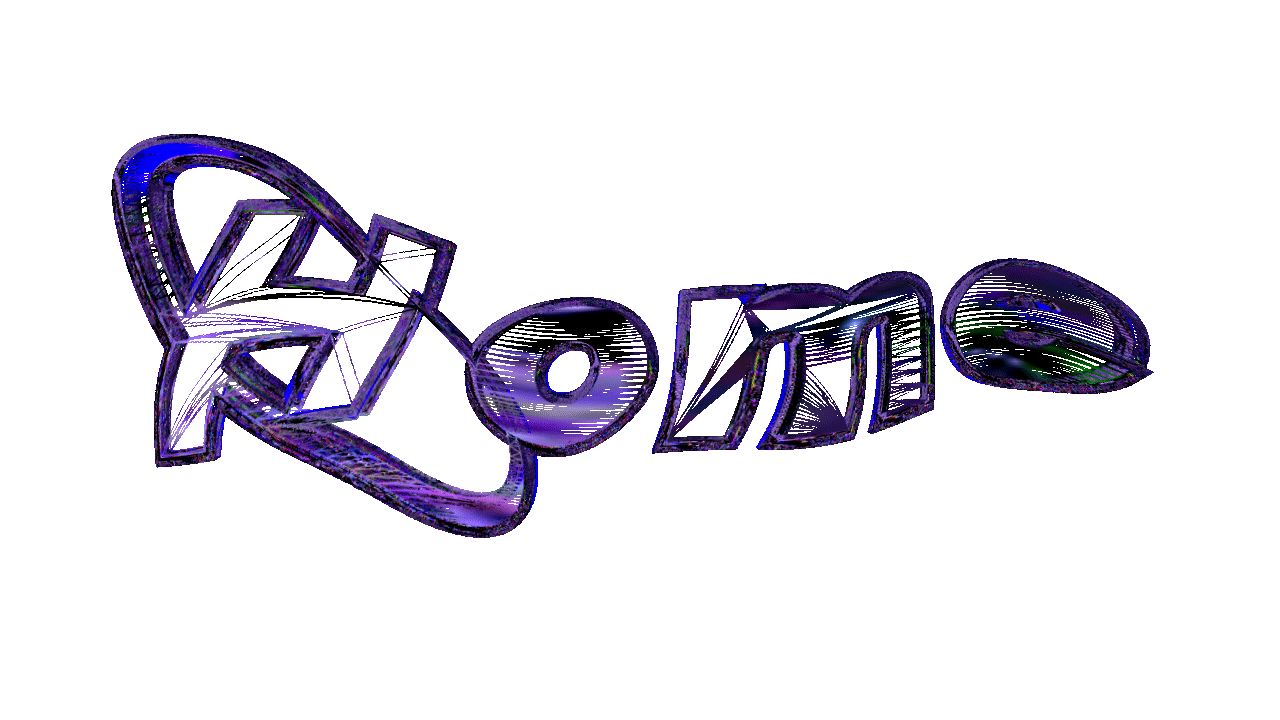



Arno Beck est un de ceux qui forcent le respect au premier coup d’oeil : son oeuvre, brillante et ludique, nous entraîne vers des questionnements sur la dualité de production graphique entre l’homme et la machine. Arno vient de Bonn, en Allemagne, où il vit actuellement et travaille. Il a étudié les Arts et les techniques de la peinture à la Kunstakademie de Düsseldorf, et obtient son diplôme en 2015. Intéressé dès ses débuts à la culture digitale et à sa transposition dans l’espace réel et tangible, il développe son oeuvre autour d’une production picturale qu’il calque sur celle de la machine.
L’homme peut-il imiter la machine ? Oui, si l’on en croit le travail produit par Arno, dans lequel il reprend les codes esthétiques liés aux PC des années 90 et plus spécialement empruntés aux logiciels de créations graphiques du style «Paint». Tous les ingrédients visuels sont réunis pour cette oeuvre qui, devant initialement prendre forme sur la toile virtuelle (l’ordinateur), prendra forme sur une toile réelle et tangible. Pour ses séries «New Document» et «Metaspace» on identifie ça et là les outils nécessaires à la création : la «brush», le curseur, les traits habituellement réalisés au spray de manière grossière, ainsi que le fond «neutre» en damier ; le tout peint à la main par l’artiste, qui va même jusqu’à détailler la pixellisation de l’objet, montrant ainsi l’imperfection des logiciels qui n’en sont qu’à leurs balbutiements.
Le résultat relève paradoxalement d’une précision et d’une minutie extraordinaires, de quoi faire pâlir d’envie la machine. C’est cette analogie technique et conceptuelle qui frappe lorsqu’on observe ces tableaux : bluffés par l’effet de trompe-l’oeil, on croirait à une impression numérique sur support, alors que c’est en réalité une image certes issue d’un programme informatique, mais créée avec une technique picturale «manuelle» et transposée dans l’espace matériel de la toile. Il s’en dégage une véritable esthétique de l’objet virtuel, justifiée par une réflexion sur la nécessité qu’éprouve l’homme à capturer cette imagerie encline à disparaître un jour, de par son obsolescence, dans l’espace 3D : née pour disparaître, l’artiste fait de son oeuvre un screenshot.



2017 'New Document'
Il en va de même pour ses «blockprints» sur papier japonais, série des « Arcade Chambers» réalisée en 2014, où il fabrique lui même les «tampons-matrices» sur du bois, pour ensuite venir les imprimer sur un support papier, en 32 couleurs seulement (en référence au système de la GameBoy Color commercialisée en 1998). Cette technique lente, «ancestrale» voire même artisanale vient complètement à l’encontre de la reproduction en série, puisqu’il n’est justement pas dans l’optique d’une multiplication de la production de ses images, mais veut au contraire marquer l’aspect unique et singulier de chaque impression, comme dans chacun de ses tableaux.
Cette opposition entre le fond et la forme est accentué par le choix de ses visuels : la technologie et l’électronique - le progrès en somme, représentées par les bornes d’arcades, deviennent l’antisymbole de la rapidité d’exécution des tâches faites par les machines. Une autre technique utilisée par Arno Beck, tout aussi impressionnante, est celle de la machine à écrire : à l’aide des caractères typographiques inlassablement tapés sur le papier, il parvient à produire une fresque totalement réaliste tout en nuances de noirs/gris/blancs, à la limite d’une reproduction numérique ou d’une photographie, qu’il ponctue ensuite de petits détails puisés dans le monde de Mario, le célèbre personnage du jeu vidéo éponyme. Il fait ainsi apparaître de petits nuages ou les fameux blocs de pierres dans l’arrièreplan, tels des clins d’oeil à la génération des consoles vidéos «8 bits» apparues à la fin des années 80.
Il montre, encore une fois, une dualité entre l’homme et l’intelligence artificielle : un contraste d’autant plus comique que ces petites icônes, habituellement visibles depuis une console vidéo puisque présentes dans le jeu, se retrouvent à prendre forme sur du papier japonais au beau milieu d’un paysage pouvant être tiré d’une photographie. Dans un monde où s’opère une fusion entre l’art et les nouvelles technologies, où bien souvent s’observe la diversité des échanges entre l’un et l’autre, Arno Beck pousse sa réflexion encore plus loin en s’interrogeant sur la dualité du processus de création et les analogies qui en résultent, mais en démontrant que parfois, une technique traditionnelle peut égaler l’ultra-performance des ordinateurs


2017 'Metaspace'
Arno Beck is one of those artists who’s forcing admiration and respect : his work of art, which is brilliant and playful, questions about duality of graphic production between man and machine. Arno comes from Bonn, in Germany, where he actually lives and works. He studied Fine Arts and Technics of painting at the Kunstakademie in Dusseldorf, where he was also graduated in 2015. First of all, he became interested in digital culture and the way of transposing it into «real space» ; he started to build his work around a specific pictural production modelled on those machines ones.
Can the man imitate the machine ? Yes, if we consider Arno’s work, in which he takes back esthetic codes linked to PC in early 90’s, and most of all to creative softwares such as «Paint». All the graphic effects are gathered here in this piece of work, which would initially be intended to the virtual frame (the computer), would finally be drawn on a real canvas. Concerning his series «New Document» and «Metaspace», we can clearly identify the tools used in order to create something : the brush, the cursor, the blurred lines made with a colorspray, and the grey «neutral» checkerboard as a background ; an amazing result is emerging from all of this, since everything is hand-painted, even the smallest detail of the pixellisation of the object, showing by the way the imperfections of the softwares in its early stages.
On the other side, his canvas reveal a hudge precision and a meticulous work, something that the machine would certainly be mad about. It’s this kind of technical and conceptual analogy which is calling us when we try to catch his works : the «trompe-l’oeil» effect is so mind-blowing that it makes us think about a standard digital printing, while it is in fact a real and «touchable» painting transposed in the third dimension space whose images come from a computer program. The virtual subjects of Arno Beck have a strong aesthetic identity, enhanced by the need to find why men are fascinated by catching these signs, signs which are born to disappear one day due to their obsolescence : Beck’s canvas are like traditional screenshot in the third dimension space.




2016 'Syntax Error'
The logic behind his other serie called «Arcade Chambers» realized in 2014, is on the same way of thinking - showing duality men VS machines’ work, but here he’s using different technics : creating wooden-stamps, he’s printing images on japanese paper, prints with only 32 colors on it as he makes a reference to GameBoy Colors’ system which was sold in 1998. This kind of slowly ancestral and traditional technic is completely contrasting with the idea of mass production, as we used to see in the serial production of images for ads or marketing. On the contrary, his aim is to emphasize the gap between the ability of the machine (and what it is made for) to generate thousands of perfect and cloned images, with the «human hand-made» way of producing single images as a work of art even with printing technic. This gap is becoming more obvious as Arno Beck’s visual subject choices are claiming their goal : these arcade chambers are a summary of new electronic systems, symbolizing technological progress while the final artistic process put them on the top of a fail down system with an anti-speed way of execution. In his work, Arno Beck uses another medium in a very impressive and amazing way : the typewriter.
He succeeds in drawing a landscape, as realistic as a photograph or a digital printing at first sight, with all the different typefaces put together and which are matching in order to make us see the several shades of grey, black and white. Then he manages to mix some tiny characters and details of the famous videogame Super Mario World in it, such as the clouds or block of stones, while he wanted to wink at the early «8 bits» gaming consoles in the 80’s, making them appear. This serie is showing, once again, the contrast between human and machine production : the funny point of view is that these small symbols used to be seen in a videogame on a TV screen or a computer, while he’s making them live on japanese paper among a nearly-photographic landscape.
Moreover in his «Interface (Typewriter)» serie, the process of creation is the same but the images produced are close to his canvas serie «New Document» : screenshots are made from creative softwares or error messages from the computer. In a world where we can observe a fusion between art and new technologies, and where we become also the witnesses of each others’ exchanges, Arno Beck developps his thinking further asking himself about the duality of the creative process and the similarities as an outcome achieved. By the way he’s trying to show that sometimes, traditional and hand-made skills are able to equalize computers’ over-performance and domination.



